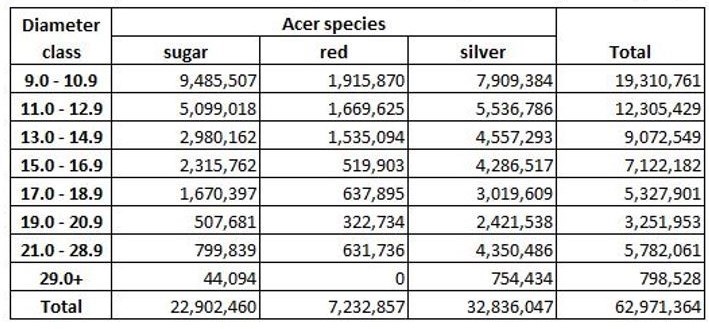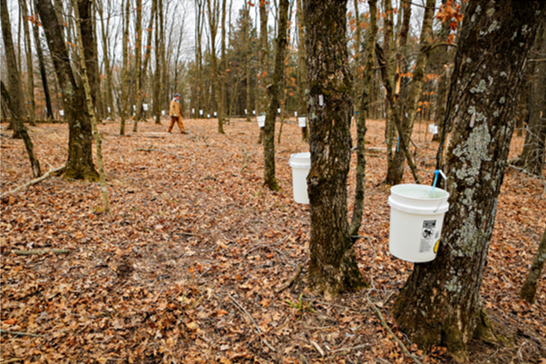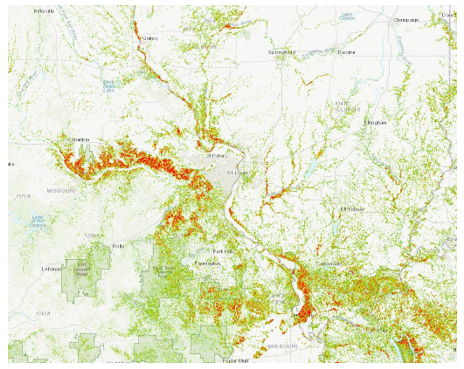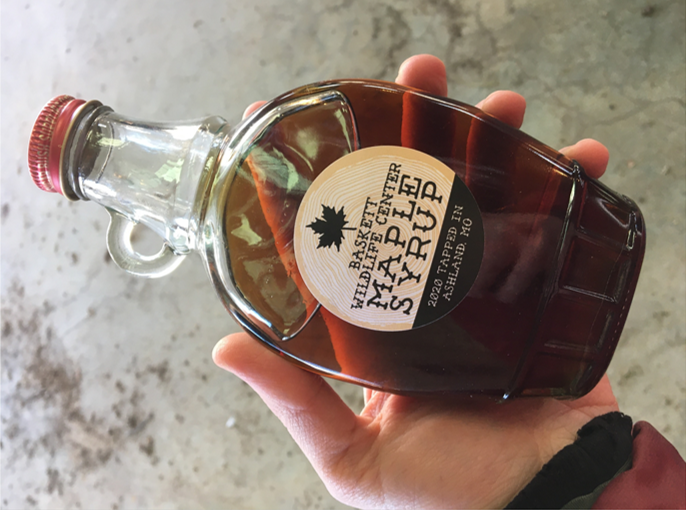Maple sugaring is a culturally valued practice in many parts of the US and Canada that can bring awareness to the importance of non-timber forest products and ecological forest management. In the lower Midwest, on the western edge of the native range for sugar maple (Acer saccharinum), syrup production is currently practiced primarily by hobbyists for home-scale and local consumption. However, Missouri and Illinois agroforestry professionals, existing sugarmakers, and researchers realize an untapped potential for a growing tree syrup industry in the lower Midwest, and are working to address relevant gaps.
The forest industry in Missouri and Illinois has historically prioritized management for red oaks, white oaks, and black walnut for their recognized value in timber markets. Still, Acer species are abundant in Missouri and Southern Illinois, with close to 63 million Acer trees (sugar, red, and silver maples, all of which can be productively tapped for sugarmaking) above nine inches in diameter (Table 1), large enough to accommodate at least one tap (USDA Forest Service, 2021). With appropriate management to favor maple growth and reproduction, the duration to achieve a tappable maple from additional existing smaller diameter trees could be substantially reduced.
 Total tree number, by diameter class, for the major Acer species in Missouri and Illinois. (EVALIDator Ver 1.8.0.01, based on data collected from 2013-2020; USDA Forest Service, Forest Inventory and Analysis Program).
Total tree number, by diameter class, for the major Acer species in Missouri and Illinois. (EVALIDator Ver 1.8.0.01, based on data collected from 2013-2020; USDA Forest Service, Forest Inventory and Analysis Program).
 Maple sap collection at MU Baskett Wildlife Research and Education Center, photo credit MU CAFNR Communications.
Maple sap collection at MU Baskett Wildlife Research and Education Center, photo credit MU CAFNR Communications.
Large diameter sugar maples are most common in the Missouri and Mississippi River Hill regions (Figure 1) where highly erodible soils are prone to deterioration when mismanaged. Given industry bias against the maple resource and the concurrent absence of outreach and awareness about the potential for maple sap products (including sap, syrup, sugar, and other value-added items), forest landowners lack the knowledge and resources to target sustainable forest management for maple. Forested land in these maple-rich counties is also substantially more affordable than cropland or pastureland, at less than half the average value (MU Extension, 2019). Given this valuation, this land is underutilized, especially by those who may have land access and finance limitations precluding them from developing agricultural enterprises on high value cropland. In addition to the value of timber resources, the opportunity to profit from a maple enterprise may increase the value of and motivation for sustainable forest management by existing and prospective landowners. In Missouri alone, there are a large number of small farms operating with marginal income, many of whom are beginning farmers with limited start-up resources (USDA Forest Service, Forest Inventory and Analysis Program, National Woodland Owner Survey [NWOS], 2019). Missouri woodland owners are also primarily small holders; more than half own fewer than 10 acres with potential to generate income from maple sugaring, and/or leased trees for taps (NWOS, 2019).
 Frequency distribution of sugar, red, and silver maples in the major river corridors of MO and Southern IL (National Individual Tree Species Atlas, 2018).
Frequency distribution of sugar, red, and silver maples in the major river corridors of MO and Southern IL (National Individual Tree Species Atlas, 2018).
In order to support informed decision-making regarding the profitability of managing for and tapping maples in the lower Midwest, a MO-IL partnership between existing syrup producers, forest ecologists and agricultural economists, conservation agency personnel and Extension staff is beginning work on a USDA Agricultural Marketing Service supported project as part of the Acer Access and Development Program (2021-2024). The project, “Putting Maple on the MAP in the Lower Midwest” involves a multifaceted approach to understanding and responding to current producer and landowner circumstances, targeting maple-rich areas in these states. A comprehensive economic and market analysis paired with growth and yield productivity metrics will contribute to construction of a region-specific decision support tool for producers to effectively initiate and manage scalable syrup production. The tool, disseminated through a Maple Awareness Program (MAP) network of producers, local Extension and USDA technical service providers will detail the benefits and costs of maple production and management practices in this region, and will be designed to serve as an incentive for landowners to sustainably manage their forests.
 Maple syrup produced at MU Baskett Wildlife Research and Education Center, photo credit Hannah Hemmelgarn.
Maple syrup produced at MU Baskett Wildlife Research and Education Center, photo credit Hannah Hemmelgarn.
If you would like to become part of the Lower Midwest MAP network, there are several ways to connect. Syrup producers can participate in the spring 2022 sugarmaker survey that will inform economic models in the maple decision support tool (survey information and producer worksheet available here: https://centerforagroforestry.org/treesugaring/). Interested and existing producers can also find more resources on the above-referenced webpage, learn more about the project here: https://cafnr.missouri.edu/2021/12/an-untapped-industry/, and participate in a lower Midwest sugarmaker Community of Practice through the active Facebook group, Missouri Maple Syrup or online at https://mosyrup.com/. For other interested Extension professionals and technical service providers, please contact Hannah Hemmelgarn at This email address is being protected from spambots. You need JavaScript enabled to view it. to discuss how you can be involved.
References:
EVALIDator Ver 1.8.0.01, based on data collected from 2013 to 2019. USDA Forest Service, Forest Inventory and Analysis Program, 1400 Independence Ave., SW; Washington, D.C. 20250-0003
Farrell, M. and B. Chabot. (2012). Assessing the growth potential and economic impact of the U.S. maple syrup industry. Journal of Agriculture, Food Systems, and Community Development 2(2), 11–27. http://dx.doi.org/10.5304/jafscd.2012.022.009
MU Extension. (2019). Missouri Farm Land Values Opinion Survey. https://extension2.missouri.edu/g401
USDA Forest Service, Forest Inventory and Analysis Program, National Woodland Owner Survey; 160 Holdsworth Hall; Amherst, MA 01003
USDA National Agricultural Statistics Service, 2017 Census of Agriculture. www.nass.usda.gov/AgCensus.
USDA Forest Service. (2018). National Individual Tree Species Atlas. https://usfs.maps.arcgis.com/apps/webappviewer/index.html?id=4ebf103ddeeb4766a72e58cb786d3ee2 Accessed April 25, 2020.


